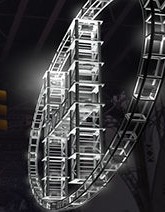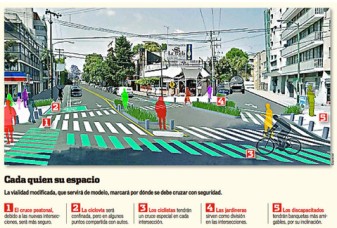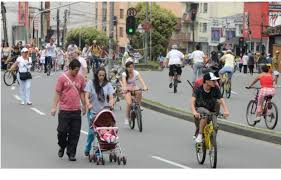The West Harlem Art Fund will make 12th Avenue a public place for Under the Viaduct, 2015. We will close 12th Avenue down to vehicular traffic with the help of NYC Department of Transportation and their Weekend Walks program. 12th Avenue will become a destination where people can meet, talk, bike, skate, dine and enjoy art. The organization has been studying various possibilities since 2005 when we 1st collaborated with the State of New York, Division of Coastal Resources and produced the study Take Me to the River and then again in 2008 with Take Me to the River II. Now, we are finally able to experiment with fresh ideas. And the use of light-based technology and design is making this happen.
Case study: Bogotá, Colombia
The Colombian city of Bogotá is one where the divide between rich and poor had long been ingrained in the city’s fabric, with many parts of the city suffering from economic and geographic isolation. Over the last 20 years, the city’s leaders, notably former mayor Enrique Peñalosa, have embarked on a citywide campaign to use public space and transportation systems to bridge the social divide and create opportunity for all of Bogotá’s citizens.
Central to the campaign has been the development of the TransMilenio bus rapid transit system, which provides fast, efficient, and reasonably priced public transportation to large areas of the city. Some 1.4 million people ride the system daily, and when it is completed there will be 388 kilometers of route, achieved at a fraction of the cost that an underground metro system would have cost. Another key aspect of the holistic approach that Bogotá has taken to its transformation is the Ciclovía. Each Sunday and on holidays, for several hours, most streets of the city are closed to cars so that people can enjoy biking, walking, and various recreational activities in the streets. These events have helped to raise awareness of the negative impact that car traffic has on people’s lives, and have been a key part of the city’s ongoing effort to regain street space for pedestrians and bicycles. City leaders also cracked down on sidewalk parking; pedestrianized Jimenez Avenue, the main street downtown; and introduced a system that restricted car use during rush hour.
Peñalosa also led an effort to increase green space and playing fields in neighborhoods around Bogotá. The result has been a decrease in crime and gang activity. Many citizens who were formerly without recreational options can now enjoy safe, healthy outdoor activities that are inclusive of women and children.
Ciclovía has reinvigorated Bogotá’s city centre, increased safety, supported active living, and exercise, and created a stronger sense of community for Bogota’s citizens. The bike routes traverse the rich and poor areas of the city alike. And Ciclovía spurred the pedestrianization of streets and the transformation of vacant lots into parks. This increased the amount and quality of public space in the city.


